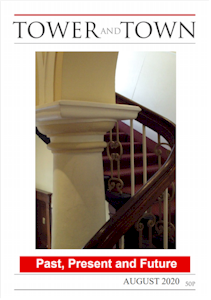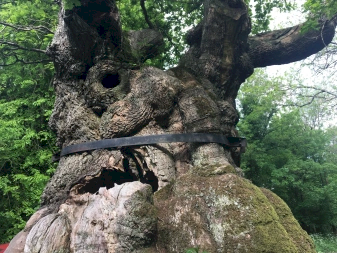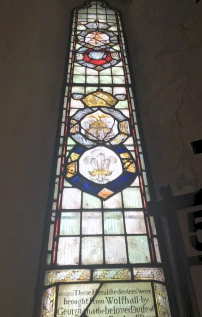

Tower and Town, August 2020 (view the full edition) (view the full edition)SafernokThe midst of May: nature’s parade. My son, mock-revising (and himself a biological marvel, inching ever upward to the sun), enthuses at the brilliance of plants – every leaf a factory at peak, puffing out its perfect equation of elements.  This photosynthetic month is ideal for discovering the Savernake – seven square miles of antique woodland and perhaps our most precious scrap of primeval forest. Hitherto, my encounters with this enchanted plateau have been limited to rushing through the verdant corridor of the A346 on my way to Salisbury: dodging cadavers of deer and the portly tangle of the Big Belly Oak, reputedly the nation’s oldest. This behemoth is thought to be eleven hundred years old, having cracked through its acorn when the Anglo-Saxon kingdoms finally united under King Athelstan, in whose annals the forest is first recorded – as ‘Safernoc’. Like a snarling cyclops, restrained by a steel collar to prevent it collapsing (or running amok), the Big Belly is an icon of England, and roughly the same vintage. Its shock of leaves in spring brings to mind lines from George Herbert: ‘and now in age I bud again: who would have thought my shrivelled heart could have recovered greenness?’. Today, though, I am drawn deeper in – through the trees to a chapel of ease. St Katherine’s Church, perched like a nesting box in the north-eastern branches of the forest. This pocket cathedral, consecrated in 1861, is a woodland glade in stone, sharing the Savernake’s spirit of stilled anticipation: as if before the starting pistol. When, at the end of the Second World War, an ammunition store hidden close by exploded, nearly every window was blasted out and the walls so badly weakened that a diocesan committee suggested St Katherine’s be demolished. Yet here she remains, unshattered. Red-bricked relics in various stages of decay decorate the lanes IMG_5475hereabouts: the former Forest Hotel, whose last guests left in the late nineties, remnants of the high and low level rail stations (the platform of the former now a sunken garden) and corroded gateways to absent avenues. The Savernake has stayed privately-owned since 1548, when granted to the Seymour family of Wolfhall – favoured as a hunting lodge by Henry VIII when pursuing his dubious quarry. Although the original hall wasted away soon after that other obese oak, a sole stained window was recovered and illuminates Great Bedwyn Church, all Tudor flowers and faded feathers. Hilary Mantel’s dazzling novels have sparked such interest in the site that the current, crumbling pile at Wolfhall Farm now bristles with archaeologists. I watched them briefly: waist deep in the Seymour sewer system, brushing off the rock of ages.  At its largest extent in the thirteenth century, the Savernake Forest covered an area ten times its present patch – reaching to Hungerford in the east and south nearly as far as Salisbury Plain – becoming so large that, in order to prevent it merging with the other eight Wiltshire forests into one arboreal conurbation, two clauses in the Magna Carta were needed explicitly to limit its spread. By the time Capability Brown arranged his scheme of radial parades and pleasing bowers, the forest had been pollarded down to pretty much its present size. A very human wilderness, then. Yet wild it is, nevertheless – and if men and women withdrew, an unbound Savernake would soon reclaim whatever ground has been lost. Its oldest oaks provoke an awe bordering on fear, certainly. Strolling up Long Harry – a path worth walking for the name alone – I approach the Cathedral Oak, a spreading millennial with a hide like Durer’s rhinoceros. Before its chancel of branches you can either stand, transfixed, or slowly retreat. See https://wp.me/s4lg2u-safernoc for the original blog post. Bishop Andrew |